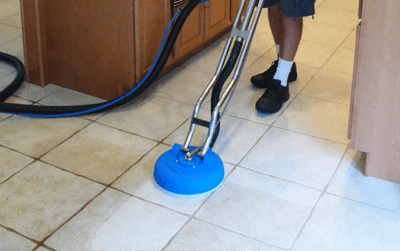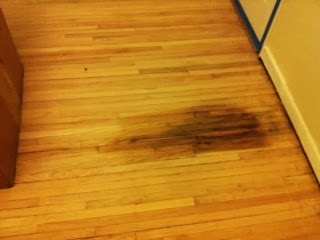Everything you Need to Know regarding Bamboo Flooring
Everything you Need to Know regarding Bamboo Flooring
Blog Article
Everybody is bound to have their private opinion about How to Care for Vinyl Flooring?.

Bamboo flooring is renowned for many house owners due to its benefits. It has actually come to be the significant choiced flooring for organization and also homeowners whenever there is demand for sustainability.
Nonetheless, bamboo similar to timber, is prone to dents and also fracturing when humidity degrees fluctuate.
So are you thinking about bamboo flooring for your home? After that, count yourself fortunate since this post will show you every little thing you need to understand. We will certainly discuss its functions to take into consideration. We will certainly also talk about the different kinds of bamboo flooring available on the marketplace. Maintain analysis!
Kinds Of Bamboo Flooring
There are 3 standard alternatives: strand-woven, upright, and also straight. Property owners can choose which sort of bamboo flooring to get based upon their attributes. The purchaser's intended visual impacts the chosen Bamboo flooring type.
Solid - Upright Bamboo Flooring
Slim strips of completely dry bamboo timber glued up and down and also pressed making use of high warmth and also pressure produce this sort of bamboo flooring.
The thinnest side of the bamboo planks will remain in an upright kind. A company bonding, pressing, and also lamination will certainly comply with. Because of their approach of signing up with, the bamboo strips include a narrow grain pattern.
The good idea concerning this kind of bamboo flooring is that it is very budget friendly as well as sturdy. Additionally, it gives a sophisticated as well as classy flooring finish. It is not extensively readily available.
Strong - Horizontal Bamboo Flooring
You will certainly observe that this kind is nearly the like upright bamboo flooring. It has a small variant. Horizontal bamboo is just one of the most popular sorts of bamboo flooring.
It is made by drying out significant strips of bamboo, slicing these bigger items right into thinner strips, and then gluing them to form planks. The boards will after that go through stress and warm to ensure they are well attached.
Natural bamboo has a lighter shade. Hence, the strips are typically tarnished. While carbonized bamboo will certainly be less difficult than routine bamboo, if you require a darker color, it might do you good. It likewise provides the natural bamboo looks and also a selection of alternatives.
Strand Woven Bamboo Flooring
Shredding the bamboo to draw out the fibers is just one of the a lot more tempting steps in producing strand-woven bamboo floors.
The bamboo fiber is frequently combined with a sticky after it's made to a pulp. The product is after that weaved as well as compressed under wonderful heat, as the name recommends.
After making straight and upright bamboo, the strips serve to create strand woven bamboo. The eco-conscious customer might find this attribute appealing. The factor is that it makes sure that the entire bamboo stalk creates extremely little waste.
Engineered Bamboo Flooring
Both strong as well as crafted bamboo flooring alternatives are readily available. Once the bamboo timber fits, it isn't very easy to distinguish between them.
Their differences are due to their production. For instance, crafted bamboo timber has a thin plywood support.
However, whether crafted or solid, bamboo flooring is strong, resistant, as well as attractive.
Engineered bamboo flooring utilizes the floating timber flooring over a slim foam base. They may likewise be in the type of vast slabs. For example, they are available in widths as much as 19 centimeters.
Features And What to Keep in Mind When Picking Bamboo Flooring
With a multi-layered finish, bamboo flooring will certainly be quite sturdy. Maintain in mind that future touch-ups might require a much more skilled flooring specialist.
Using your finish will make matching repairs much easier when established up in your home. However the surface will certainly not last as long as factory finishes.
Besides that, below are some exciting attributes of bamboo flooring.
Sturdy
Bamboo flooring is not developed equivalent. There are several sorts of bamboo, and also the different methods used to transform it right into slabs affect its sturdiness.
Bamboo, like wood flooring, can come to be vulnerable to tear and use over time. Also, damaging, breaking, and also various other wear and tear may take place. You can also sand some bamboo to look like hardwood, however not all.
Low-cost Upkeep
You can maintain bamboo flooring in good condition by cleansing and damp mopping. So in spite of being extra vulnerable to scratches, bamboo flooring is really easy to keep.
You might obtain bamboo floors that are as good as brand-new by sanding them down and also applying a fresh coat of paint.
Eco-Conscious
This flooring originates from an all-natural plant called the bamboo plant. When compared to other tree species made use of to make hardwood flooring, bamboo grows even more and quicker.
Profits
It's straightforward to know why bamboo flooring has become much more favored nowadays. For practically any kind of home, bamboo supplies lots of strong and audio remedies for the setting. Bamboo flooring could be the best option for upgrading your flooring.
We will likewise review the various types of bamboo flooring available on the market. Home owners can select which kind of bamboo flooring to purchase based on their qualities. Straight bamboo is one of the most preferred kinds of bamboo flooring.
While carbonized bamboo will certainly be much less difficult than routine bamboo, if you need a darker shade, it might do you great. After making upright and horizontal bamboo, the strips offer to produce strand woven bamboo.
Bamboo Flooring
Manufacture of Bamboo Flooring
Stranded bamboo is made by shredding the bamboo stalks into small strands, which are compressed into sheets using heat and resin binders, then cut into planks to use as building materials. This form of flooring is available both as tongue-and-groove planks that are nailed down, as well as planks that float over the underlayment. This is a premium form of bamboo flooring, available in many colors.
Horizontal bamboo flooring is manufactured by cutting the strands into thin strips which are then glued together to form planks. This type of flooring has a "grain," since the long stalk fibers are visible in the flooring. This type of bamboo is not as hard or durable as stranded bamboo, but it can have a very striking appearance. It, too, is available both in nail-down planks and as floating floor planks.
Engineered bamboo flooring is made by bonding a thin layer of bamboo onto a plywood or MDF core. This flooring is comparable to engineered hardwood and is installed in the same way—usually with click-lock planks that float over a foam underlayment. It is the least expensive (and least durable) form of bamboo flooring, and it cannot be refinished.
Unless it is stained, most bamboo flooring has a natural blonde or amber color that resembles unfinished maple or birch, but darker tones are available through a process called carbonizing, which entails subjecting the planks to high temperatures. While the color can be very attractive, carbonized bamboo is softer than uncarbonized forms, and is more susceptible to scratching.
Eco-Friendliness
Environmentally conscious consumers are often drawn to bamboo as a wholly renewable resource. Unlike the hardwood lumber industry, where trees can take decades to mature, bamboo stalks grow so fast that there is little environmental liability to the harvest practices. Moreover, bamboo stalks that are cut simply continue to grow and replenish themselves so that they can be harvested.
But the manufacturing process creates other environmental concerns. Bamboo floor planks are manufactured by slicing or shredding the stalks of bamboo grass plants and then compressing the pulp back together using heat, pressure, and a resin-based adhesive identical to those used in many other flooring products. This adhesive often contains urea-formaldehyde that can outgas into the air.1
The level of adhesive used and the amount of toxins emitted will vary, depending on how the bamboo planks are manufactured. Cheaper products may contain more formaldehyde, while more expensive products may use alternative materials in the resins. The amount of formaldehyde used in bamboo flooring is similar to that found in engineered hardwood flooring or MDF sheathing, and it tends to be a problem only for sensitive individuals.2 But if this concerns you, look for bamboo products labeled as formaldehyde-free.
Bamboo Flooring Cost
This material is priced at about the same level as most hardwood floors. You can find bamboo flooring products ranging from about $2 to $8 per square foot, with a national average of $3.84 per square foot. Installation costs for bamboo flooring are much the same as for hardwood flooring. On average, figure on adding about $4 per square foot for installation labor in addition to the cost of materials. You should be able to get a good-quality bamboo installed for less than $10 per square foot, including materials and labor.
https://www.thespruce.com/benefits-and-drawbacks-of-bamboo-floors-1314694

We were shown that article about How to Care for Vinyl Flooring? through an associate on our other web address. Are you aware of another individual who is involved in the niche? Please feel free to share it. I praise you for your time. Visit again soon.
Report this page